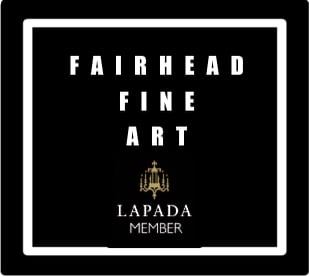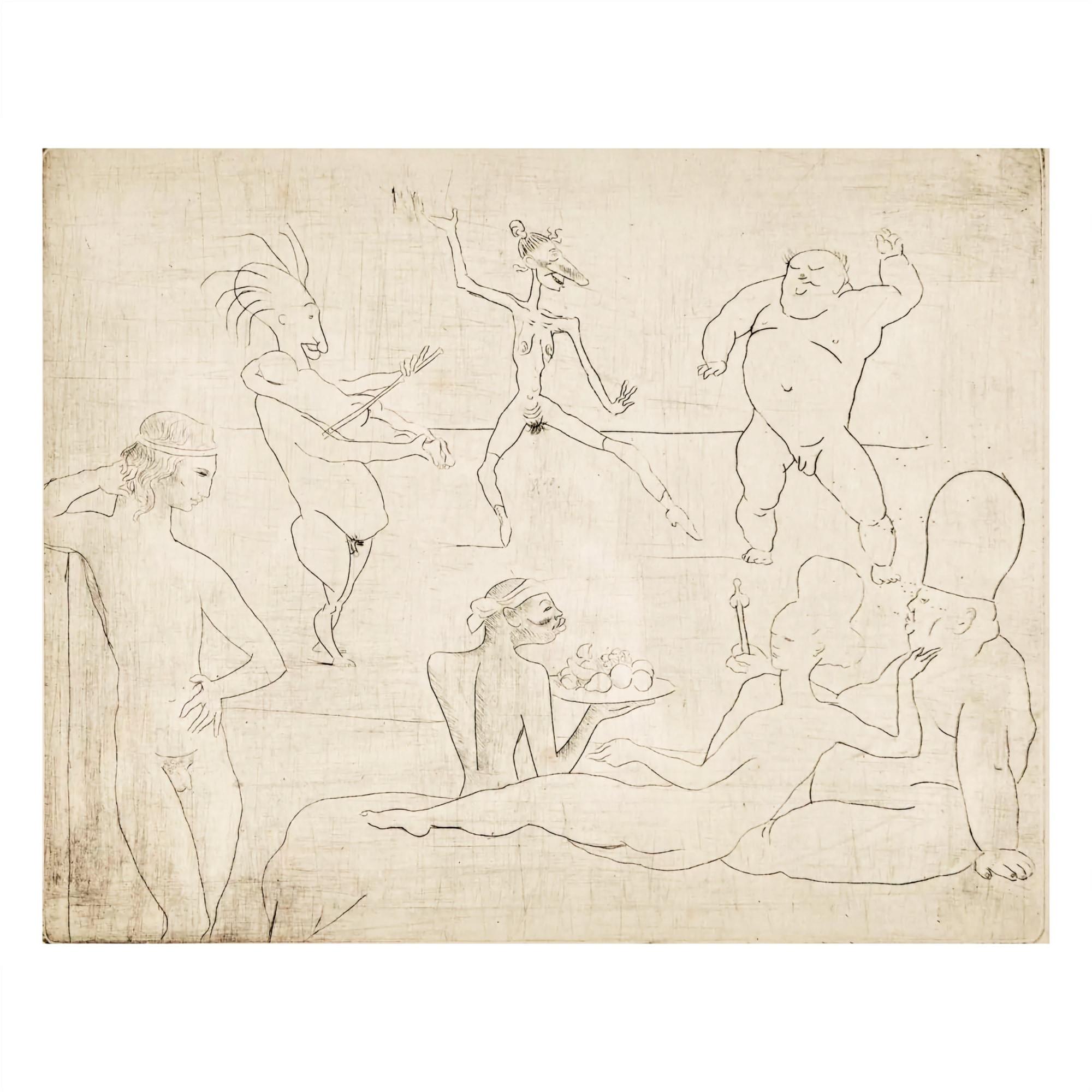Pablo Picasso - La Danse
£ 0.00
La danse barbare, devant Salome et Herode La danse barbare, devant Salome et Herode
Medium: Original drypoint Etching, Paris, about March 1905, on velin Van Gelder paper. This series was not signed or numbered.
Edition: 250
Reference: Bloch, Georges. 1968-1979. Pablo Picasso, catalogue de l'oeuvre gravé et lithographié, 4 vol. Berne: Kornfeld and Klipstein. (Bloch15)
Geiser, Bernhard and Brigitte Baer. 1986-1996. Picasso: Peintre-Graveur, Catalogue raisonné de l'oeuvre gravé et des monotypes, 7 vols. Berne: Kornfeld. (18.B1)
Note 3: The series of etchings, known as the Saltimbanques, consisted of a group of works all relating to the same theme. Picasso was a very young man when he completed these works but they are considered to be amongst the very best he ever made. The name of the series comes from the Italian words saltare, meaning "to leap," and banco, "bench," which refers to the stage on which the acrobats usually performed. Saltimbanques were the lowest order of acrobats; Picasso pictured them as vagabonds with simple props in an empty, desertlike landscape. He was familiar with earlier representations of clowns and harlequins from eighteenth-century art, which frequently included figures from the commedia dell'arte, a popular theatrical form featuring stock characters and their antics. These characters played significant roles in the paintings of such artists as Tiepolo, the Le Nain, and Watteau. Picasso was particularly drawn to the circus people, many of whom were his Spanish countrymen. Their agility and pursuit of the art of illusion delighted him, and their gypsy like lives touched the artist, who himself searched for new horizons. Picasso identified most closely with the clowns, those performers who masked their true selves with costumes and makeup. In fact, Picasso portrayed himself as the harlequin in a diamond-patterned costume in “The Family of Saltimbanques.”. The most famous and memorable of the series was, without doubt “Le repas frugal” which is counted amongst Picasso’s earliest print masterpieces.
Published by: Ambroise Vollard, Paris, 1913
Printed by: Louis Fort, Paris, France
Size: 185 x 232 mms (Image size) ; 43.8 x 33 cms (Paper size)
Category Pablo Picasso

